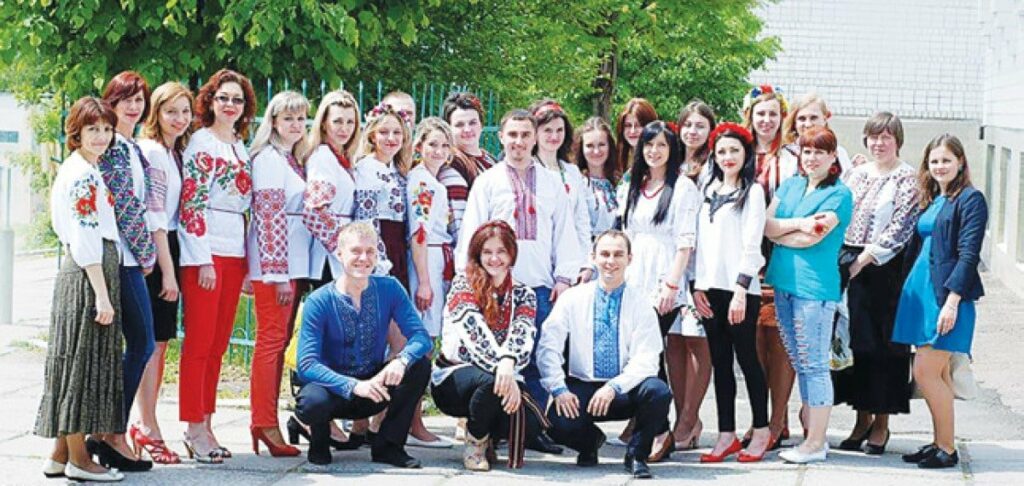
Creation of the Krakow Ghetto
On the eve of World War II, according to historians’ calculations, about 56,000 Jews lived in Krakow, which amounted to about a quarter of the city’s population. Most of them earned their living through trade, small-scale production, and the provision of services. For example, Jews made up 61% of the city’s doctors and 62% of its lawyers. After the occupation of Poland in September 1939, most of them left Krakow voluntarily or forcibly. After a year and a half, about 15,000 Jews remained in the city.
An important date in Krakow’s history is March 3, 1941. It was on that day that Otto Waechter, head of the local regional government, announced the creation of a ghetto. All Jews were moved to the Podgórze neighborhood on the southeastern bank of the Vistula River. The neighborhood occupied 30 streets, 320 residential buildings and 3,167 rooms. 15,000 people were housed where there used to be 3,000 inhabitants. Three or four families lived in one apartment.
The Jews were ordered to move into the ghetto, and the Poles from the Podgórze district were ordered to take over the apartments they had left. Oskar Schindler did just that. Thanks to his acquaintance with members of the Abwehr, as a member of the Party of Sudeten Germans in Czechoslovakia, he was able in the first months after the occupation to purchase real estate in Krakow and to lease the Polish-Jewish enterprise for the production of enameled dishes Rekord. Tadeusz Pankiewicz, a Pole and hereditary pharmacist, owner of the pharmacy “Under the Eagle”, which was located in the heart of the Jewish quarter, was also offered to move to the central part of the city. However, he did not want to move. Tadeusz Pankiewicz used all his connections. He had to document his “Aryan” origin and pay bribes. An important argument was the fact that because of the high population density in the ghetto, epidemics began. As a result, Tadeusz Pankiewicz and his three assistants were allowed to continue working in the pharmacy.
Tadeusz Pankiewicz – the only Pole in the ghetto
At first, Tadeusz Pankiewicz did not set himself any noble goals, he just felt sorry for the family business: his father Jozef Pankiewicz had owned the pharmacy “Under the Eagle” since 1909, and in 1933 he handed it over to his son. By the pharmacist’s own admission, he was also driven by mercantile considerations. He believed that after the war he would have to return someone else’s property, but whether he would be able to get back his – it is still unknown. However, the events unfolding before his eyes did not leave the Pole indifferent. The fact is that the pharmacy “Under the Eagle”, where Tadeusz Pankiewicz lived and worked, was located on the Place de la Concorde, where Jews were collected before being sent to concentration camps.
Every day the situation in the ghetto became more and more tense. If at first the Jews were allowed to leave Podgórze, for example, to go to work in other districts of Krakow, the situation soon changed. Here is how Tadeusz Pankiewicz recalled these events: “Immediately after the Passover holiday, the ghetto began to change. Dozens of laborers, masons and carpenters worked day and night and built walls around it. They put iron bars on the windows of the houses facing the Aryan part of the city. Pillars are erected and gates are built, people look on in horror as the high walls grow, shaped like Jewish tombstones. And now the wall is completed. The barring of the windows is also finished. There are three gates leading in and out of the ghetto. The main entrance is near the Podgórze market. Above the gate are Stars of David and a huge Jewish inscription: “Jewish Quarter”.
Clandestine activities in the pharmacy “Under the Eagle”
Soon the pharmacy “Under the Eagle” became for the Jews of the Krakow ghetto not just a place to buy medicine, but a window to the outside world. Here they learned the latest news, followed the progress of the war, and maintained professional and social contacts. The pharmacy was a safe house through which the underground communicated with the Jewish resistance movement. Tadeusz himself lived in the back room of the pharmacy, while his assistants Irena Drozdikowska, Helena Krywaniuk and Aurelia Danek went home to the German part of the city every day after work.
Tadeusz Pankiewicz distributed free cardiological and painkillers, as well as dressing materials to those in need. Often he fed the hungry: the Germans allocated 250 kcal a day for each ghetto inhabitant, but even this meager ration was delivered irregularly.
Beginning in May 1942, when the Germans began deporting Jews en masse to the Bełżec death camp, Tadeusz Pankiewicz hid in his pharmacy those who were in danger of certain death – children and old people. He made sleeping pills, thanks to which he managed to smuggle out of the ghetto a number of small children with a pile of rags. He supplied the elderly with hair dye. They dyed their gray hair to look younger and avoid death. Pankiewicz also helped to obtain forged documents, took for safekeeping valuable things, personal documents and scientific articles, so that after the war the scientists who were prisoners of the ghetto could continue their work. He was very conscientious and meticulous in fulfilling such obligations, which earned him great respect from the survivors.
Naturally, all this time Tadeusz Pankiewicz risked his life. And several times the danger was especially close. Thus, one of the informers in the Krakow ghetto, Simon Spitz, included Pankiewicz in the list of persons “recommended for relocation” in the fall of 1941 for organizing meetings in a pharmacy for the residents of the ghetto and assisting them in crossing its borders. That time only the intercession of the famous surgeon Rosalia Blau saved Tadeusz’s life. Even closer to the edge of the abyss Pankiewicz found himself in October 1942. During a raid German soldiers searched the pharmacy “Under the Eagle”, did not find Jews hiding in it, but arrested the owner himself. And Tadeusz was lucky again: SS Sturmbannführer Willy Haas, who commanded the expulsion of Jews, recognized him and allowed him to return to the pharmacy.
In March 1943, the Germans liquidated the Krakow ghetto. Most of its inhabitants (by some estimates about 6,000) were deported to the Plaszow concentration camp or sent to work. Those who proved unfit for labor – the elderly, the sick, children, and parents who refused to part with their children – were killed in the ghetto area or sent to Auschwitz for extermination.
The pharmacy “Under the Eagle” continued to operate. Tadeusz Pankiewicz tried to help the prisoners of the Plaszow camp until the end of the war, and also supported artists and performers who escaped from Warsaw to Kraków after the 1944 uprising.
Years of oblivion and deserved glory
In 1951, all private business in Poland was nationalized. Pankiewicz was appointed manager of his own pharmacy, but remained in this position for only two years. The position of the former owner weighed on him and he transferred to another pharmacy, where he worked until his retirement in 1974. In April 1967, the pharmacy “Under the Eagle”, which after nationalization was called “Social Pharmacy No. 31”, closed, its historic interiors were destroyed and the bar “Wisła” was opened in its premises.
After the war, Tadeusz Pankiewicz wrote a book of memoirs entitled Apteka w getcie krakowskim (The Pharmacy in the Kraków Ghetto). It was first published in 1947, but under socialist Poland, the history of the Krakow ghetto was not remembered.
Historical justice was restored only in 1983. Tadeusz Pankiewicz received the title “Righteous Man of Peace” for helping the Jews in the Krakow ghetto, Concord Square was renamed to Ghetto Heroes Square, and the pharmacy “Under the Eagle” was carefully restored. Today it is a branch of the Krakow History Museum and houses an exhibition on Jewish life in the ghetto and the role of pharmacist Tadeusz Pankiewicz in underground activities during the occupation of the city.



